|
1966 Isadora Duncan, the Biggest Dancer in the World
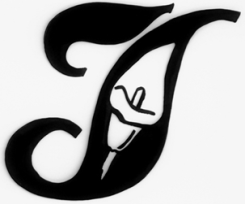
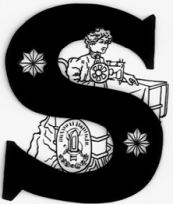



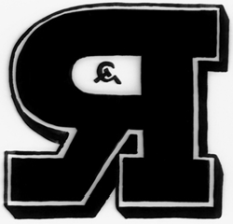

"Isadora seemed to embody the best and worst of an
artist. She had genuine talent, some mystical insight, but she was a bit
bogus as well"
(Ken Russell in John Baxter's An Appalling Talent, 1973, ch 12)
The dancer Isadora
Duncan "Isadora Duncan (1877-1927) was an American pioneer of
dance and is an important figure in both the arts and history. Known as
the “Mother of Modern Dance,” Isadora Duncan was a self-styled
revolutionary whose influence spread from American to Europe and Russia,
creating a sensation everywhere she performed. Her style of dancing
eschewed the rigidity of ballet and she championed the notion of
free-spiritedness coupled with the high ideals of ancient Greece: beauty,
philosophy, and humanity" (from Isadora Duncan Dance Foundation,
click here).
The film must
have the fastest start ever in a film, Duncan dancing
frenetically, her clothes falling off till she is carried
off the stage still dancing and the audience go wild. On the Monitor and Omnibus series nudes were mainly forbidden,
but might be included in special circumstances. Isadora Duncan was
one of the exceptions because the scene was "highly stylised" (from Sir
Huge by Paul Ferris, 1990, ch9).
After this typical Ken Russell shock-start, with Isadora spelt
out in letters, the films switches
to a voice-over (compare Valentino) of Isadora´s life,
then moves to traditional documentary stock shots of
Greece and a historian talking. The commentary is typical BBC for the time and not typical of
Russell "lack of fires and thin tunics make stoicism
an essential part of the curriculum".
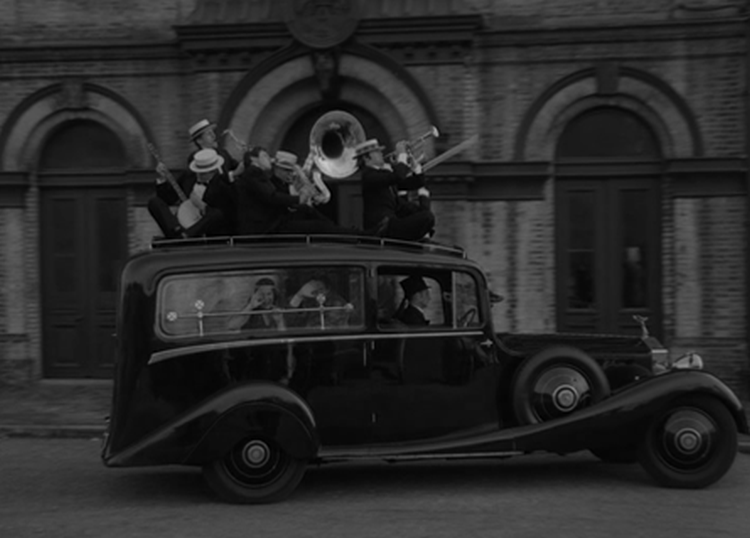
Wild imagery is present throughout: the
one-legged man (a cameo by Ken
Russell) rescuing Isadora from the sea after her
suicide attempt, Isadora kissing her lover in the
hearse over the coffins of her two dead children
as a band of musicians play on top of the hearse (above).
Eric Idle of Monty Python is one of the people in this scene.
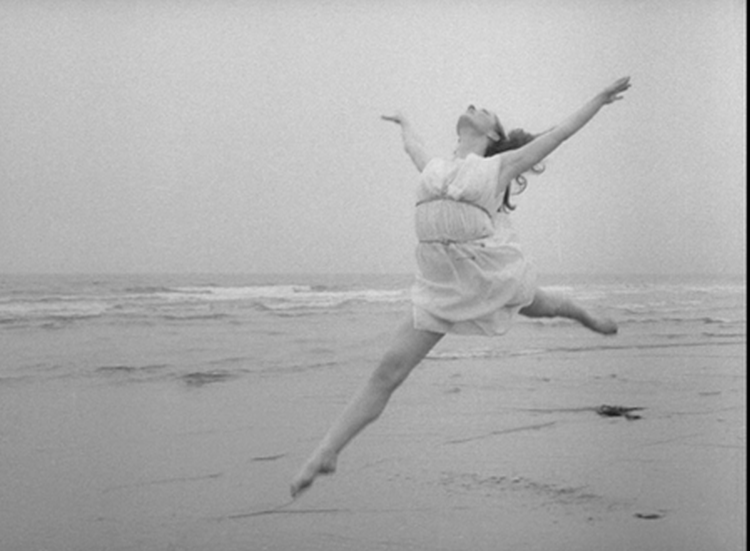
Judith Paris, who would become a Russell regular, as the
young Isadora providing some gifted dancing otherwise lacking in a film
about a dancer.
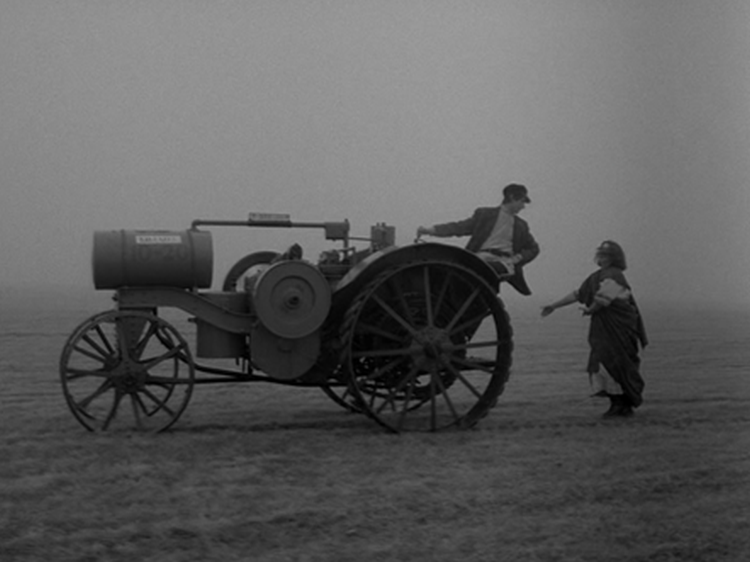
The tractor in Russia could be from Ken's Monitor
documentary Mr Chesher´s Traction Engines.

In the second
half the film does begin to flag. There is little
dialogue (mainly mime or speechmaking) but what
dialogue exists is very bad (acting and
writing) and the dancing is another problem. It
becomes increasingly clear that Vivian Pickles
cannot dance beyond running in circles and waving
her arms in the air- this makes a film about one
of the most famous dancers ever difficult and no
editing and close up of hands can get around it.
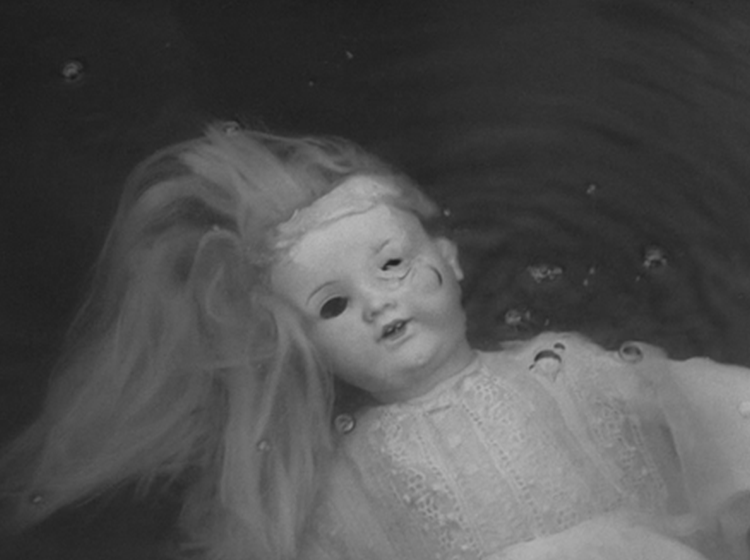
Isadora's children drowned, here represented by the doll.
The image of a doll in the water comes back in Russell films such as
Gothic.
The dancing with the masses of children is however joyful,
the children are from Bellairs School of Dancing.
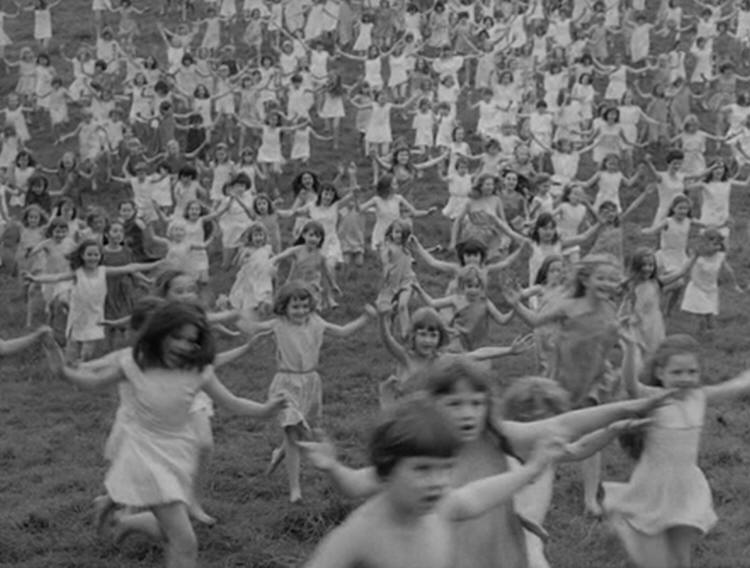
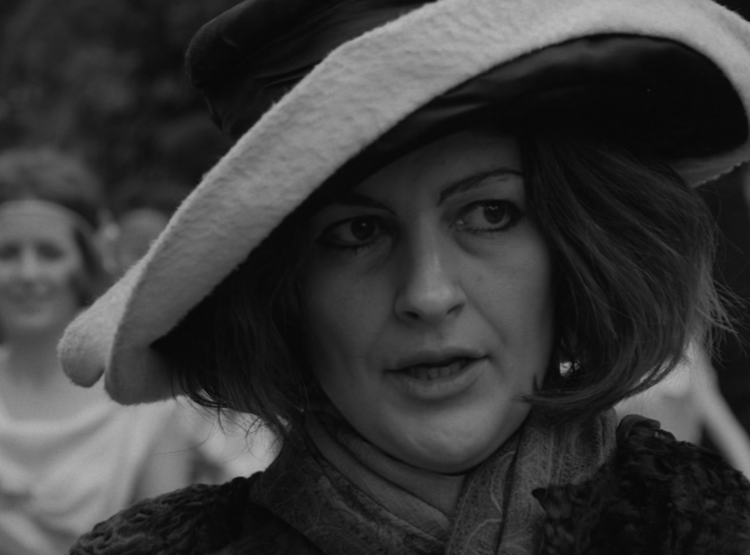

Isadora is presented with flowers and says "I lay this
wreath on the grave of my hopes" (left) and the aging Isadora
(right)- make-up is by Dawn Alcott.
Isadora's shocking death, her scarf caught in the wheels
of a car strangling her.
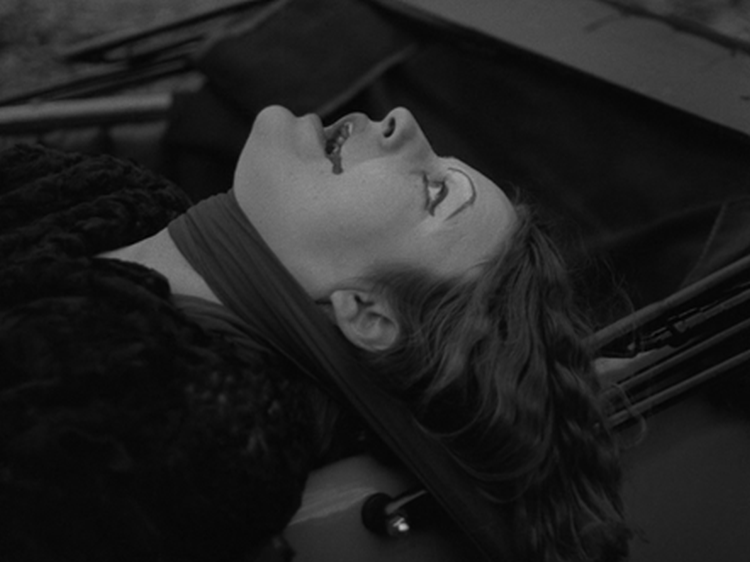
“… a great woman; a magnificent, generous,
gallant, reckless, fated fool of a woman. There was no place for her in
the ranks of the terrible, slow army of the cautious. She ran ahead, where
there were no paths… her departure to Russia to found a school of dancing,
in 1921… her fantastically ill-advised marriage… She died as she should
die, dramatically and without warning” (Poor Immortal Isadora, Dorothy
Parker, 1928).
Some regular Russell
images occurs: the beach scene, water reflecting sun and
out of focus, women dancing arms in air, fire
and water, a doll in the water, a failed suicide (compare
The Music Lovers), a film in a film (slide show). The dancing children are
similar to those in Ken's amateur film Amelia and the
Angel. The Singer sewing machine would come back much
later in Martinu, the pool scene in Lady Chatterley and
the veils in Salome.
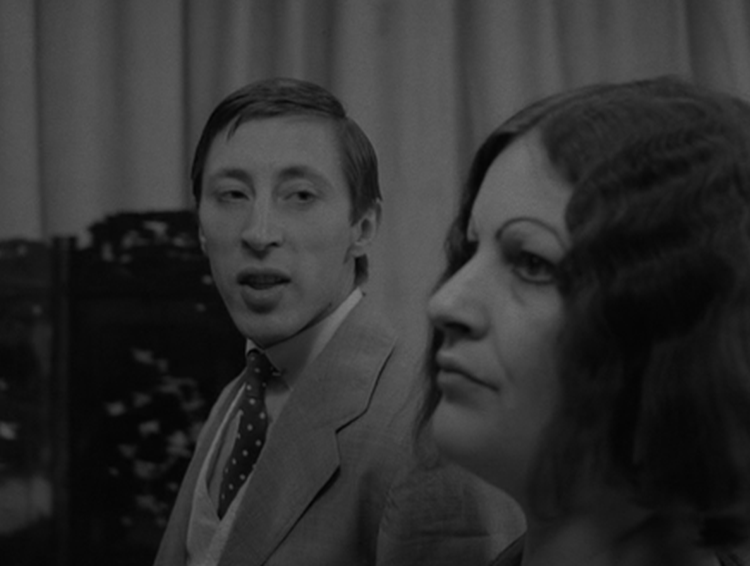
Murray Melvin as a reporter with Vivian Pickles.
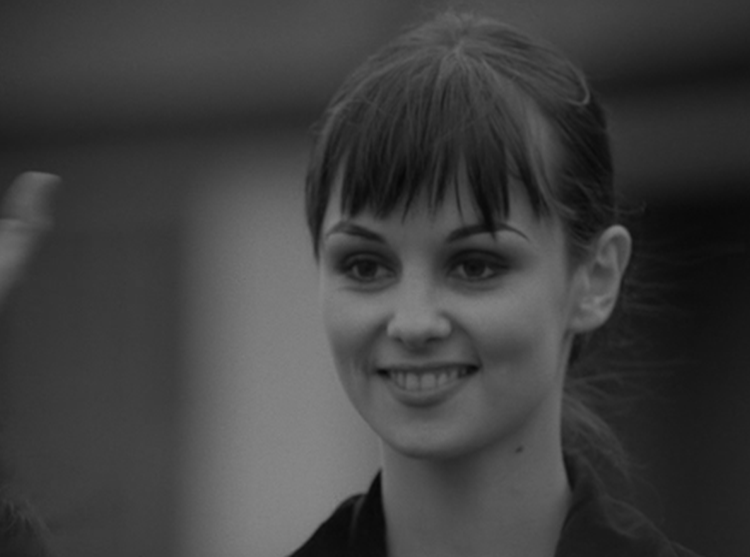
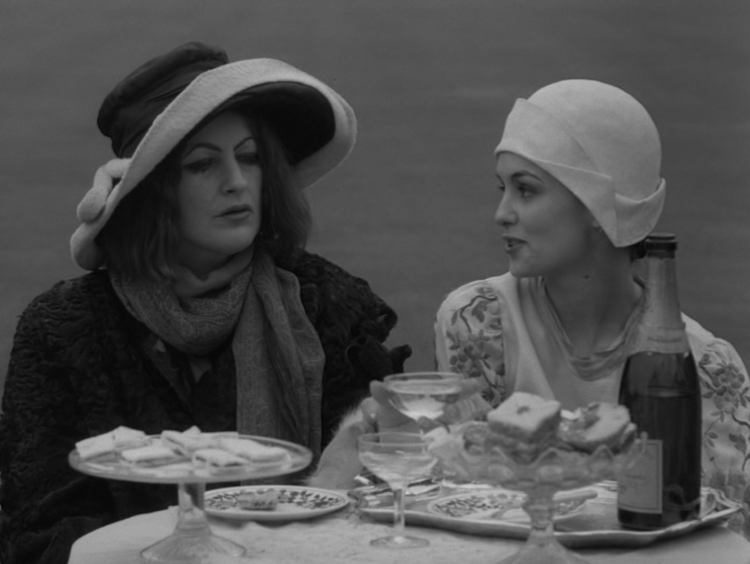
Alita Naughton from French Dressing, has a brief appearance.
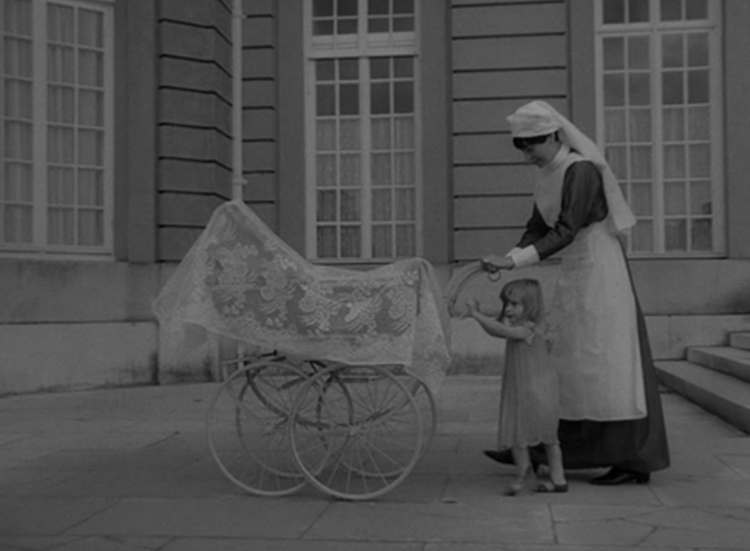
The nanny with Isadora's daughter, actually Ken's wife
Shirley Russell and daughter Victoria.
This is one of Russell's favourite films. Rudolf Nuryev the dancer
disliked the film and was one of the reasons there were
problems starting Nijinsky (which never got made). Nuryev
later starred in Valentino. Vivian Pickles stars.
Others include Alex Jawdokinov (who was also in Billion
Dollar Brain, Music Lovers and Savage Messiah and would
later act alongside Ken in The Russia House), Iza Teller
(Dante's Inferno and the films Billion Dollar Brain and
The Devils) and Alita Naughton of French Dressing.
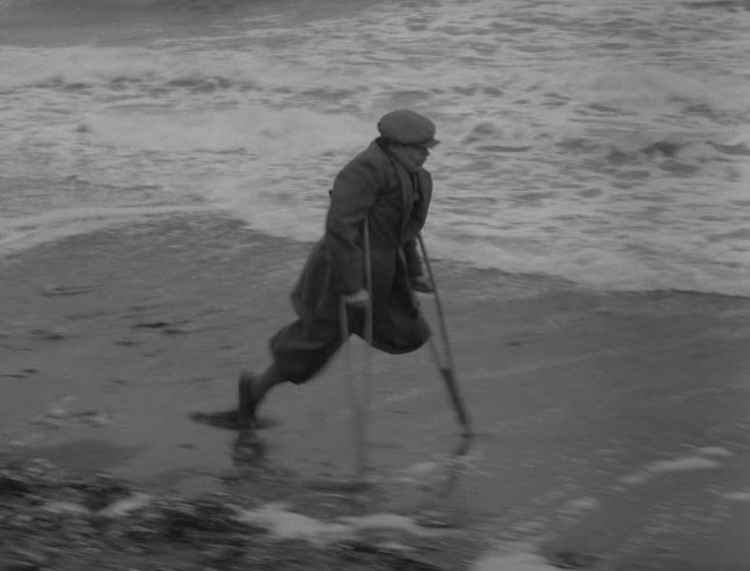
Ken Russell's cameo. Ken directs and produces and the script was by Ken
and Sewell Stokes, the co-author of Isadora's autobiography, who then re-did Isadora with Melvyn
Bragg and Vanessa Redgrave.
"Russell, as usual, is not concerned with precise facts. His
script, written with a friend of Isadora's, Sewell Stokes, tends to bind
and “reshape” details of the dancer's history. All of it, however, is true
to her free spirit, the warm‐hearted, lovable, exasperating creature
soaring above mere facts. Compared with this Isadora, the more
recent Vanessa Redgrave portrait turns into a faded wallflower" (John J.
O'Connor, New York Times, 5 May 1971).
Ken has a one-legged cameo on the
beach (above). Camerawork was by Dick
Bush and Brian Tufano (Trainspotting), editing was by
Michael Bradsell and costumes by Shirley Russell and
Joyce Hammond. The director's assistant Tony Palmer went on
to be a director in his own right. The historic scenes from
Greece are by Leni Reifenstahl.
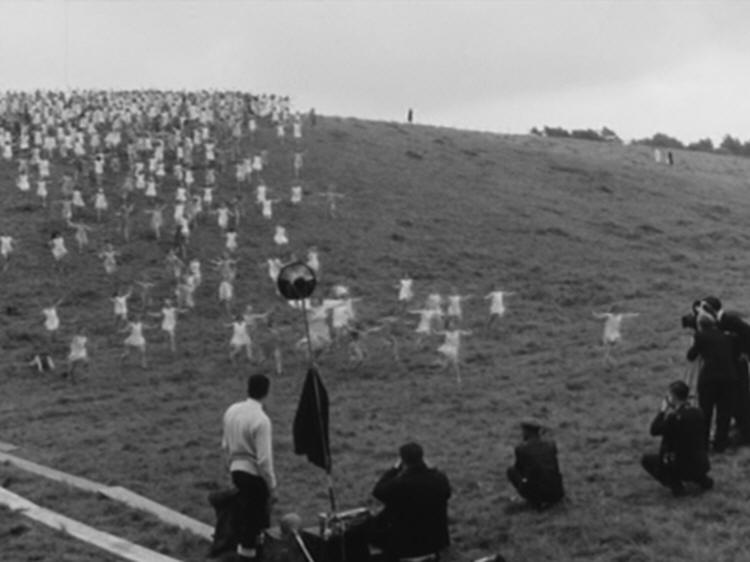
Filimg the scene with the children (from Late Night Line Up:
Russell at Work on Russell at the BBC DVD).
The music includes:
- Suite of Old American Dances, Robert Russell Bennett
- Air on a G String, Bach
- Daphnis et Chloe, Ravel
- The Sewing Machine (from The Perils of Pauline), Frank
Loesser
- Trois Gymnopedies, Satie orchestrated Debussy
- La Marseillaise, Rouget de Lisle
- The Stars and Stripes Forever, John Philip Sousa
- Lieutenant Kijé, Prokofiev
- Marche Slave, Tchaikovsky
- Narcissus from Water Scenes, Ethelbert Nevin
- Ninth Symphony, Beethoven
- Liebestod from Tristan und Isolde, Wagner
- Bye Bye Blackbird, Mort Dixon
A flawed classic.
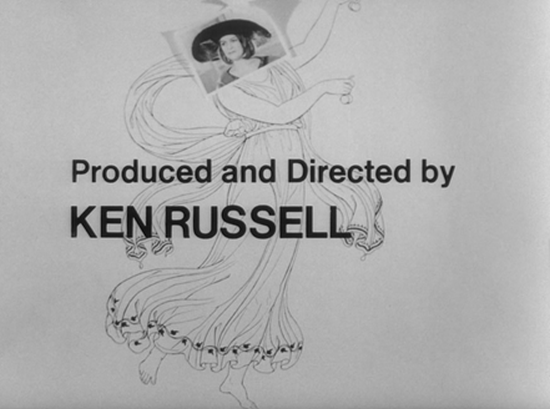
"Russell, as usual, is not concerned with precise facts. His
script, written with a friend of Isadora's, Sewell Stokes, tends to bind
and “reshape” details of the dancer's history. All of it, however, is true
to her free spirit, the warm‐hearted, lovable, exasperating creature
soaring above mere facts" (John J. O'Connor, New York Times, 5 May 1971).
All images from the DVD of the film.
|






















